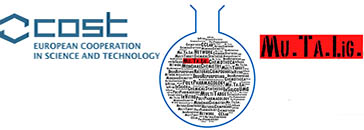
General information
| Name:Richard |
| Surname: Engh |
| E-mail: Richard.Engh@uit.no |
| Cell phone number with international prefix: +47 77644073 |
| Country: Norway |
| Affiliation: UiT The Arctic University of Norway |
| Gender: F □ M X |
| Year of the PhD title: 1987 |
| Personal web page: https://no.linkedin.com/in/richard-a-engh-77949a88 |
| Previous COST participation: No X Yes □ |
List of 10 selected publications within last 5 years
| 1. Addresssing the glycine-rich loop of protein kinases by a multi-dimensional interaction network: inhibition of PKA and a PKB mimic, B.S. Lauber, L.A. Hardegger, A.K. Asraful, B. A. Lund, O.C. Dumele, M. Harder, B. Kuhn, R.A. Engh, F. Diederich (2015) Chemistry doi: 10.1002/chem.201503552. |
| 2. Assessing protein kinase target similarity: examples comparing sequence, structure, and cheminformatics approaches, O.A. Gani, B. Thakkar, D. Narayanan, K.A. Alam, P. Kyomuhendo, U. Rothweiler, V. Tello-Franco, R.A. Engh, (2015) BBA – Proteins and Proteomics, 1854, 1605-1616. |
| 3. The crystal structure of a DYRK1A PKC412 complex reveals disulphide bridge formation with the anomalous catalytic loop HRD(HCD) cysteine, M. Alexeeva, E. Åberg, R.A. Engh, U. Rothweiler, (2015) Acta Cryst D. 71, 1207-1215. |
| 4. Perspective on Computational and Structural Aspects of Kinase Discovery from IPK2014. E. Martin; S. Knapp; B. Roux; H. Moebitz; T. Varin; R.A. Engh; J. Meiler; A. Baumann; V. Berdini; M. Vieth (2015), BBA – Proteins and Proteomics, 1854, 1605-1616. |
| 5. Luciferin and derivatives as a DYRK selective scaffold for the design of protein kinase inhibitors, U. Rothweiler, J. Eriksson, W. Stensen, F. Leeson, R.A. Engh, J.S. Svendsen, (2015), Eur. J. Med. Chem. 2015 Feb 25; 94:140-148. doi: 10.1016/j.ejmech.2015.02.035. |
| 6. Mutants of protein kinase A that mimic the ATP-binding site of Aurora kinase, A. Pflug, T. M. de Oliveira, D. Bossemeyer, R.A. Engh, Biochem. J. (2011), 440, 85-93. |
| 7. Evaluating the predictivity of virtual screening for Abl kinase inhibitors to hinder drug resistance, O. Gani, D. Narayanan, R.A. Engh, Chemical Biology and Drug Design (2013), 82, 506-519. |
| 8. p38 MAP kinase dimers with swapped activation segments and a novel catalytic loop conformation, U. Rothweiler, E. Åberg, K.A. Johnson, T.E. Hansen, J.B. Jørgensen, R.A. Engh, J. Mol. Biol. (2011), 411, 474-85. Epub DOI: 10.1016/j.jmb.2011.06.013. |
| 9. Structural origins of AGC protein kinase inhibitor selectivities: PKA as a drug discovery tool. E. Åberg, B. Lund, A. Pflug, O.A.B.S.M. Gani, U. Rothweiler, T.M. de Oliveira, R.A. Engh, Biol. Chem. Hoppe Seyler, (2012), 393, 1121-1129. |
| 10. VX680 Binding in Aurora A: π-π Interactions Involving the Conserved Aromatic Amino Acid of the Flexible Glycine-Rich Loop, T.M. Oliveira, R. Ahmad, R. A. Engh, J. Phys. Chem. (2011), 54, 312-319. Epub 2010 Dec 3. |
Main skills and expertise (up to 5)
| 1. Protein crystallography |
| 2. Physical chemistry |
| 3. Protein kinases |
| 4. Enzyme-ligand interactions |
| 5. Molecular modelling |
Main equipment/facilities available in the participants’ lab (up to 5)
| 1. Bacterial protein expression & purification |
| 2. Protein crystallography and X-ray structure determination |
| 3. Protein-ligand biophysical interactions: DSC, SPR, MST, ITC, NMR (600MHz) etc. |
| 4. Cheminformatics/High performance computing |
| 5. |
Short personal activity proposal for the COST Action CA15135 (max 1000 characters)
| I expect to be able to contribute especially in two areas:
1) to offer bindng studies, co-crystallization and structure determination work for protein-ligand interactions, especially for protein kinases currently produced in our lab (e.g. PKA and mutants, Aurora, Dyrk, Abl) but also new targets as priorities and resources allow.
2) to develop and provide access to structural cheminformatics tools for modelling purposes; e.g. characterization of target similarity profiles, identification of selectivity determinants, etc. |
Work Group preference: score from 1 (preferred) to 4 (not preferred)
| Work Group of the CA15135 COST Action | Score |
| WG1: Development of new chemical entities | 2 |
| WG2: Selection of biological targets and assessment of biological data | 2 |
| WG3: Development of chemical databases | 4 |
| WG4: Development of Computational methods for multiple ligand design and discovery | 1 |
